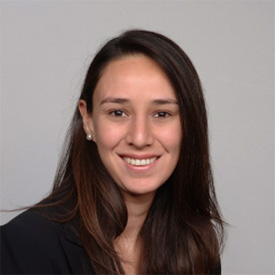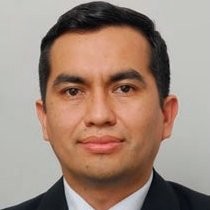Institute of Tropical Medicine Alexander von Humboldt
Institute of Tropical Medicine Alexander von Humboldt
Using Wildix to Combat COVID: Improved Communications Fuels an Ambitious Public Health Project by the Institute of Tropical Medicine Alexander von Humboldt

The Problem

“In Peru, the hospital system was really not prepared for this,” explained Dr. Fiorella Krapp Lopez, associate investigator at the Institute of Tropical Medicine Alexander von Humboldt. “At the very beginning, our health system was very, very strained and very close to collapse.”
Dr. Krapp explained, “We started leading this initiative to set up a system that would allow follow-up and management of the patients that were having less severe symptoms and could be managed at home, so we could try to relieve the pressure in the hospitals.”
The Solution

“With Wildix, when using WebRTC, you only need a browser. The doctors were trained very easily, and by opening the Wildix URL they were immediately ready to do their job. A group of volunteers would program a web management system that would display the numbers of the patients, so it was suggested to implement click-to-call with Wildix to minimize dialing errors on the part of the doctors. The implementation was running against time so it was necessary to implement the telephony in a fast way.” Mr. Pizarro concluded, “Wildix was 100% compatible with the specifications requested by the operator.”

“What we needed was to have a virtual platform so as to keep the physicians safely at home, because they were not able to go anywhere due to their high risks. So having this connection just through the internet on their computers and not having to use their own phones, was very helpful for us. They were very happy with the system from the very beginning.” She continued, “Wildix would allow us to follow the patients and everything. It was a project we carried out over about one to two months, through dynamic work. We spent one month just setting up all the flows and validating questions for the patients and everything like that.”
“These are doctors that are hired by the hospital but have high risk conditions, so they cannot be physically with patients,” Dr. Krapp clarified. “So we gave them the opportunity to participate in this project, following patients from home safely with this tool.”
“It was very user friendly,” Dr. Krapp also related. “Most of [the physicians] were older than 65 — that’s why they were staying at home — and we did a very short tutorial and they learned how to use it very quickly.”
The Results
“They had no problems using the installation, which was our main concern,” she said. “They were able to do it without any difficulty. It was very easy to implement and to teach them how to use, so I think that’s an A+ for that.”
“Now with Daniel [Pizarro], we have been working on a ‘second adventure,’ and that’s a larger project that I created because I had such a good experience with Wildix,” she related.
“We are conducting a study and trying to enroll donors for convalescent plasma,” explained Dr. Krapp. “We have a large group of young volunteers that are answering phone calls and giving information. “The goal is to provide information to the potential donors, to motivate them to donate. Before, they were just filling out a form — just, like, a Google form — and we wanted to push a little more on calls, because when donors talk with somebody, they get more motivated. That way, we can answer their questions and everything.”
“It’s also a virtual platform: a virtual call center,” said Dr. Krapp.
“In my experience, it was very flexible. In just two days, it allowed us to set up everything. We incorporated all these users who can all move their call to another user if, for example, they need a superior level of evaluation. It has been very, very gratifying to work with this platform. “Daniel [Pizarro] (of Infobox) has also been very supportive. They give us reports of the numbers of calls, so we can monitor the volunteers and everything.”
“As of right now, we are implementing Wildix Kite in this project, because we want to receive calls from Peru con Plasma volunteers through the website,” explained Mr. Pizarro.
“I am a researcher, so I am always thinking about what else we can do, especially in this really critical situation,” she said. “Hopefully in the next few months we can find more help and more time to set up a couple more uses with Wildix, because I think there are many gaps here in Peru that need to be addressed in terms of communication with patients.”
Goals
- Connect a team of physicians to at-home COVID-19 patients for virtual checkups and follow-up treatment
- Integrate a team of volunteers into the system for more capable communications
- Implement the technology quickly, with a short training period, so as to use it quickly and stay ahead of the pandemic
- Organize a team of volunteers over a virtual connection to act as call center operators for plasma donors
Value Gained:
- Connected a team of 9 physicians and 10 volunteers with a total of over 300 patients seen so far, with 1,200 interactions over the conferencing system
- Set up a communications platform under a strict timetable
- Trained users on how to use the system quickly and efficiently
- Established platform to follow up with patients easily and conveniently over a 10-14 day period
- Created a virtual call center connecting 35 volunteer call agents to a virtual PBX from their homes, using only a browser interface
- Began integrating Kite with plasma drive website to improve registration process through increased contact with volunteers
The solution was implemented by Wildix Partner

Find a Wildix Partner
![]() +44 3300 563 634 – UK Office
+44 3300 563 634 – UK Office
![]() +1 614-484-1500 – US Office
+1 614-484-1500 – US Office
![]() +372 (61) 89586 – Holding Company
+372 (61) 89586 – Holding Company
Wildix U.K Limited
Rolt house,
Coventry Canal Basin,
St. Nicolas Street, Coventry,
West Midlands, CV1 4LY
VAT ID: 276226491
Wildix Inc.
175 S. Third Street
Suite # 1050
Columbus, Ohio 43215
Wildix EE OÜ – Holding Company
Laeva tn. 2,
10111, Tallinn, Estonia
VAT ID: EE 101984698


